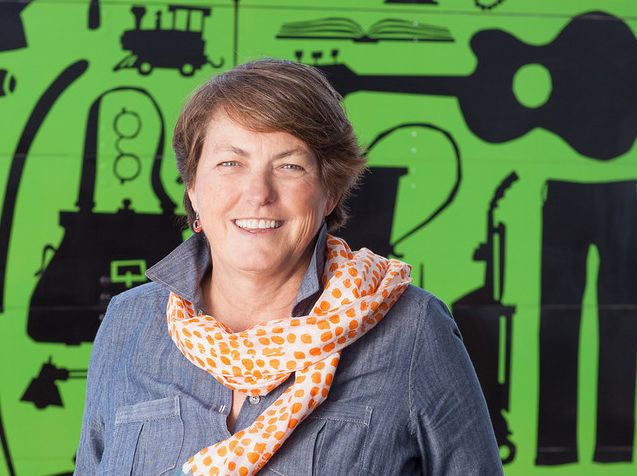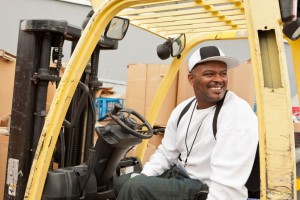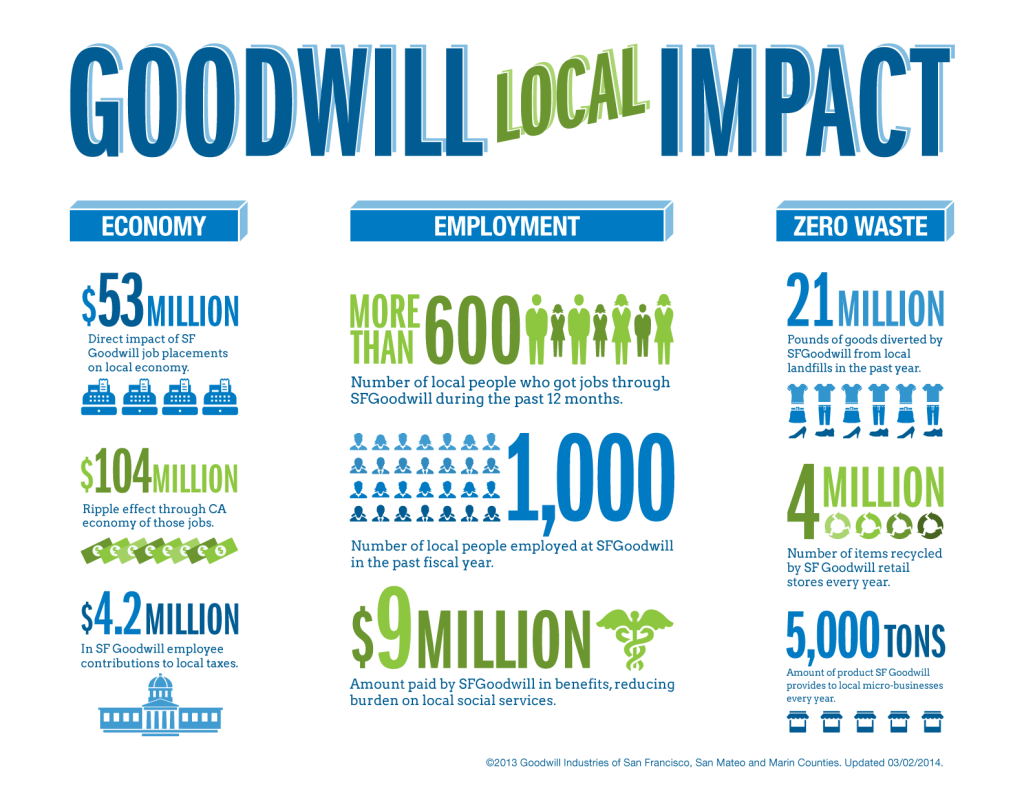Regional Goodwill Leader on the Importance and Challenges of Staying Nimble

Mention Goodwill and most people think downmarket thrift stores. But the $4 billion dollar nonprofit organization is the original social enterprise, earning far more than it accepts in donations. Goodwill is comprised of a network of 165 agencies in the U.S. and Canada and 14 abroad, has its roots in a century old vision to “give a hand up, not a hand out” to those who had fallen on hard times. This year alone, Goodwill Industries has helped more than 200,000 people get back to work through the sale of donated clothing and household items.
The longevity and pervasiveness of the organization as a household name speaks not only to its sticking power but also its ability to innovate. Goodwill of San Francisco, San Mateo and Marin Counties in California leads in that respect. This regional chapter is on a roll. Goodwill SF applies business acumen to drive social good, holds itself accountable to a triple-bottom line (people, planet and prosperity), is about to turn 100 years old, and has just sold its headquarters building in San Francisco’s booming business Central Market district.
Schaffer&Combs has been working with the Goodwill chapter and its President and CEO Maureen Sedonaen at this exciting inflection point to help it create long term strategy, improve its operations and organizational design, and expand its fundraising efforts. Sedonaen has been at the helm since just last year and brings with her a fresh perspective on driving growth in the social impact sector. Prior to joining Goodwill, she led Revolution Foods, a fast-growing company focused on providing healthy school lunches, and before that she served two decades as founder, president and CEO of Youth Leadership Institute, an innovative leader in youth development.
Sedonaen spoke with us about Goodwill’s role as a leader in the field of social enterprise, the challenges and opportunities of the current funding environment and what it’s like to lead an organization through such a pivotal time in its history.
Many people associate Goodwill with the thrift stores they see around town, donate to and shop in; but the organization is much more than that. It’s also a driver of economic growth in the region through job creation and training for low-income San Francisco residents. Do you think that Goodwill’s larger role in regional poverty alleviation is underappreciated?
I think it’s just mostly unnoticed. I’m sure if people knew of the many things we did they would be quite grateful and appreciative. Once most people open the door and look inside, they see that there’s an incredible amount of diversity in what do, a lot of opportunities, and that we’re actually putting people back to work through the businesses we’re driving. The common response we get is, “I had no idea you did so much.”
Around the people, planet, prosperity trifecta, a lot of people think we just put people back to work by employing them in our retail stores. They don’t understand that we also run an e-commerce business, an after-market salvage business, and we also have incubators. On the planet side, we’re one of the largest contributors to saving the environment in our region through landfill diversion and the services that we provide. And on the prosper side, 80 percent of the money we earn to help solve poverty, we earn ourselves. That’s pretty unique and significant for a nonprofit. People generally know a piece of Goodwill, but they don’t know all of Goodwill.
What are some of the challenges and opportunities faced by a nonprofit focused on making a deep impact in a small geographic area?
We’re able to go deep because of the breadth of what we do. And we do have a global impact by selling goods in the overseas market as first line clothing and shoes, which are very, very needed in developing countries. So that’s an interesting twist. The global piece is happening because there are Goodwills in the U.S. and internationally as well. One of our challenges of being a hybrid organization, is that people see our workforce development programs but they don’t see our environmental work. When we’re working with donors or stakeholders and trying to engage them in our work, I think sometimes it can be so overwhelming and complex that it doesn’t resonate as much, when in fact it’s an opportunity for people to get a 5X return on their investment.

It’s an exciting time for Goodwill San Francisco with the sale of its headquarters building and the upcoming 100th anniversary. What do these changes mean for the organization as a whole and in particular with regard to its fundraising efforts?
A 100th anniversary is such a significant milestone, what with Goodwill being the oldest social enterprise in the U.S. and this Goodwill being the fourth one created. It speaks to a tale of two cities. We have the gift of what I like to call our bubble in the Bay Area, but we also have a tremendous amount of people who need the support of Goodwill as a trampoline to get back on the road to self-sufficiency. Over the last 100 years we’ve climbed out of several recessions, and while things shift and change, they don’t change much for the working poor. So we need a fundraising and engagement strategy to help us achieve our goals. Clearly the capital that we’ll get from selling our property sounds like a large number but we have to turn around and replace a flagship store, our headquarters, and increase our warehouse footprint; all this in one of the most expensive cities in the world. That is a daunting challenge. In terms of fundraising, it’s not about a newspaper headline coming out and everybody thinking, “Wow, now they have everything they need.” That’s just not the case.
We also need to invest in our future and build an endowment because we haven’t traditionally done that. Approaching this anniversary, we’re still at a nascent stage of building supporters, allies, and investors in our work. We could definitely ramp up and serve thousands more people as a scaled social enterprise; we just need more space, better technologies and operational efficiencies, a refresh in our retail stores, and we need to actively engage volunteers from the corporate sector and the community. Those are all things in our strategic plan. So as we make the dream happen, I think there’s tremendous opportunity for people to engage with Goodwill in a way that they haven’t for the other 99 years.
Is Goodwill considering raising funds through means other than the typical nonprofit fundraising mechanisms, such as impact investing and program-related investments (PRIs)?
Yes, we’re looking at several new funding technologies. We can potentially invest in business opportunities with some of the investments, which would entail both being an equity holder as well as having a jobs pipeline on the other side of it. We’re also looking at traditional PRIs, though they’re a pretty complicated system, but we could leverage a PRI in a way that would be very unique as we build out our businesses. Our mission statement is not “Goodwill runs retail stores to put people out of poverty;” our mission statement is, “We create solutions to poverty through the businesses we operate.” So as we look forward with creative financing and social capital investments, as well as partnering with social impact businesses both in for-profit and nonprofit, we think there are some tremendously leveragable opportunities.
Is this type of funding appetizing to your stakeholders?
It’s pretty new for us to talk in this way and people are excited, but they’re not really sure what it means yet. During my first year at Goodwill, in working to stabilize the organization and pivot our workforce programs towards more job placement and employer engagement, we’re building out our strategic plan. It’s a dynamic document that serves as our north star. So while it can be a little more than most people have had to put their brain around in relationship to Goodwill and nonprofit support, we’re finding that once they have more information people get excited and ask how they can be a part of it.
It’s not your first time working as a leader in the social impact field with both for- and nonprofits. What have you learned about the role of innovation in effecting positive social change?
That it has to be something that is very much a part of the DNA of the organization. You have to be willing to push hard on systems that are what I call “calcified” and operated in a very traditional paradigm. When people see opportunity, whether it’s an innovative technology, strategy, or partnerships, or just a new way of approaching a problem, and doing rapid prototyping and solving problems quickly, it lends an energy and an intensity that, for people who have an appetite for that, this is a great place for them to be and work. For people who aren’t early adopters or can’t see that their way of doing something is any way problematic, it’s much more difficult. We definitely have a cultural sea change going on here and a clashing of cultures, but I’ve seen that before and it makes it exciting. Certainly when you come from a company like Revolution Foods, where it’s a lean startup and people are eating innovation for lunch – pun intended – it’s different. For us at Goodwill, we’re getting there. We have to help people see that these solutions work better, are actually fun and have greater impact.
What have you learned the hard way in your career that could be useful for emerging leaders in social enterprise to know?
You have to be innovative and authentic. You have to be strategic but you also have to lead with passion and vision. Also, you’re going to get a lot of pushback, and people you really like are going to nod their head but then think, “Wow, this is too fast,” or “This isn’t right.” So to persevere you must be comfortable in your own skin and in what I call “gut and instinct leadership.” But it’s not for everybody. At the end of the day, especially solving complex problems like poverty, it’s complicated. We’re coming from doing things in a very different way. Particularly in this sector, tech is an enabler and a facilitator but it’s only part of the solution. At the end of the day we’re about transforming people’s lives, giving them job skills and putting them back to work. We’re about getting employers to believe in people and take a risk and make an investment and be our partner on this path.
Speaking of impact – that is a key word in today’s giving environment. How does Goodwill convey its impact as a triple-bottom line company to the public at large and funders in particular? And is it hard to straddle so many lines?
The way we try to communicate impact is through tools like infographics, and by talking about our work in all three areas. We have a huge opportunity to educate our donors, community and constituents, to educate our partners in nonprofit and government, and to really make sure that people see the entirety of Goodwill. But it’s challenging because sometimes it’s not so tangible. It’s great when we say we placed 640 people in jobs last year, diverted 21 million pounds from landfill, and we’re the number one job source for people with highest barriers to employment in the city and county of San Francisco – all three of those things are true. If you asked somebody what Goodwill does, probably they wouldn’t be able to say any of those things. So it’s about how we get our message out. And because we’re resource-constrained, even though we’re selling our building, we don’t have a lot of money to tell the story, so we’re trying do that through social media, the website, donor sites, and through our contact with the very generous people who give us their treasures every day. It’s definitely a full circle challenge. From the fundraising perspective, it’s an area where we’re sharpening our skills and need to continue to grow into our own.

With regards to Goodwill’s impact, how will the Bay Area be different 100 years from now as a result of the organization’s leadership?
I hope a couple of things: that we will continue to build strong pathways back to self-sufficiency from poverty, to places where people are getting the job experience they need to move on to higher wage jobs and support themselves and their families. That’s the machine that we are, and we do a great job at it. I hope that we have some very innovative businesses that train and support people, but that also impact the planet, and provide important support, services, and products for families who are value shoppers, families who are making their dollars count, millennials who are treasure hunting, so their experience with Goodwill is positive and mutually beneficial at every step. Finally, that we transform the way people think about those in poverty, because job displacement and difficult family circumstances and challenges can happen to anyone. So by contributing to us, whether online, in our stores or by donating, people feel like they are part of the solution in a very resonant way, and that Goodwill is your partner should you be on that path.
Anything else you’d like to add?
We are open to all kinds of possibilities and partnerships with other social impact businesses, whether they’re nonprofits or for-profits, and other businesses in general. We openly invite everyone to join us in this great and incredible honor of creating solutions to poverty through the businesses we operate. I just want to put that out there because I mean it.
Learn more about Maureen | Learn more about SF Goodwill
Recent Posts
- Our Search Division is Ramping Up to Meet Increasing Demand for Talented, Purpose-Driven Executives
- 2020 Demanded Smart Strategies From Every Organization – Here’s What We’ve Been Working On
- S&C supports major new alliance in apparel industry
- Call it What it is: Power
- Schaffer&Combs places Higg Co’s incoming Vice President, Marketing & Communications and Senior Manager Sales
Recent Comments